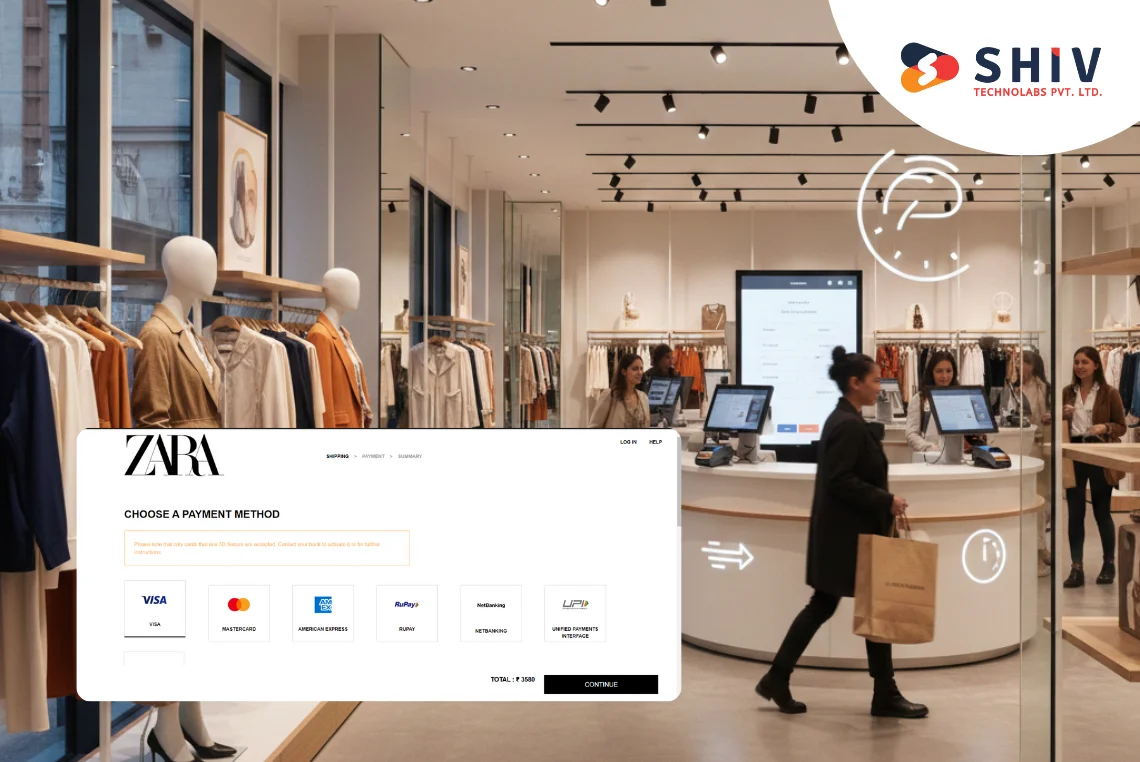Table of Contents
Running a successful eCommerce business requires more than attractive product pages and a responsive user interface. Behind every transaction, inventory update, and order confirmation lies a critical part of the system that users never see — the backend.
The eCommerce backend plays a central role in making sure everything works smoothly. It handles tasks like processing payments, storing customer information, tracking inventory, managing product listings, and facilitating communication with third-party services such as shipping providers or payment gateways.
A well-structured backend for an eCommerce website must be fast, reliable, and secure. It must also be able to handle growth, whether that means more users, a larger catalog, or expansion across new regions.
Building such a system requires thoughtful planning, the right frameworks, and the support of experienced backend development service providers to address performance and scalability from day one.
This article breaks down how to build the backend for eCommerce website, which tools are most often used, and what features every modern eCommerce backend should support.
What Is an eCommerce Backend?
The backend of an eCommerce platform is the system that handles data, logic, and server-side operations. It’s responsible for processing orders, managing products, storing user information, maintaining security, and ensuring everything works without errors. It connects the frontend (what users see) with the server, the database, and third-party services such as payment gateways and delivery platforms.
The goal of a strong backend is to make all of this run smoothly while allowing room to grow, scale, and adapt to future needs.
Why Backend for eCommerce is Important?

If your backend is poorly structured or built on outdated systems, your store will suffer from slow loading, transaction failures, security breaches, and frustrated customers. That’s why the backend isn’t just about what works now, it also supports how you scale in the future.
Here’s what your backend should do:
- Handle thousands of simultaneous users without crashing
- Keep sensitive user data secure
- Process payments accurately
- Connect with shipping and fulfillment platforms
- Provide admin users with dashboards and analytics
- Work with mobile apps, PWA (progressive web apps), or other connected interfaces
Core Components of a Solid Backend for eCommerce
When designing the backend for eCommerce website, several components must work together efficiently. Let’s break down each one:
1. Server Infrastructure
Your server is the foundation of the entire backend. It processes requests from users, stores and retrieves data, and delivers pages and services. Cloud platforms such as AWS, Google Cloud, and Microsoft Azure provide scalable options for hosting an eCommerce backend.
You can choose between:
- Dedicated servers: High performance, full control, more expensive
- Shared hosting: Cheaper but limited control and speed
- Cloud servers: Flexible, scalable, pay-as-you-go
Choosing the right infrastructure depends on your traffic expectations, budget, and customization needs.
2. Database Management
The database stores all your essential data products, users, orders, inventory, payment records, reviews, and more.
Popular database types for eCommerce include:
- Relational (e.g., MySQL, PostgreSQL): Best for structured data like user details, orders, and products
- NoSQL (e.g., MongoDB, Cassandra): More flexible for handling unstructured data such as user sessions or activity logs
A well-designed database structure supports quick search results, secure storage, and real-time inventory updates.
3. APIs and Third-Party Integration
No eCommerce system works in isolation. APIs connect your backend to third-party services:
- Payment gateways (Stripe, PayPal, Razorpay)
- Shipping partners (DHL, FedEx, Shiprocket)
- Inventory management systems
- CRM and marketing tools
- SMS, email, and push notification providers
A backend built with an API-first approach allows better connectivity, modularity, and future upgrades.
Best Backend Frameworks for eCommerce Websites

Choosing the right backend framework is one of the most important technical decisions when developing an eCommerce platform. The framework forms the foundation of your application logic, database interaction, and system performance.
It should support scalability, provide essential libraries or tools, and match your team’s technical skills. Whether you’re building from scratch or upgrading an existing platform, understanding the strengths of each option helps in selecting the best backend for your eCommerce website.
Here’s a comparison of some of the most widely used backend frameworks:
| Framework | Language | Strengths | Use Case Suitability |
|---|---|---|---|
| Node.js | JavaScript | Fast performance, event-driven, large ecosystem | Real-time apps, fast-growing startups |
| Django | Python | Built-in admin, security-focused, scalable | Content-heavy or secure eCommerce platforms |
| Laravel | PHP | Clean syntax, MVC pattern, great community support | Small to mid-sized online stores |
| Ruby on Rails | Ruby | Rapid development, convention-based coding | MVPs, fast product launches |
| ASP.NET Core | C# | High performance, enterprise-grade, cross-platform | Large-scale enterprise eCommerce systems |
| Spring Boot | Java | Modular, strong support for microservices and APIs | Complex, enterprise-level eCommerce projects |
Each of these frameworks offers distinct benefits, and the best backend for an eCommerce platform often depends on factors like scalability needs, team expertise, third-party integrations, and long-term maintenance plans.
Features Every eCommerce Backend Should Support
Now let’s look at the key features that any modern eCommerce backend should support. This is where we’ll use our first bullet list:
✔️ User Management
- Account registration and login
- Profile updates
- Secure password management
- Role-based access control (admins, vendors, users)
✔️ Product Management
- Add, edit, and remove product listings
- Categorization, tags, and attributes
- Stock management
- SKU and barcode support
✔️ Cart and Checkout System
- Persistent shopping cart
- Coupon and discount code logic
- Shipping calculation
- Order confirmation and tracking
✔️ Payment Handling
- Multiple payment methods
- Secure transaction processing
- Refunds and chargebacks
- Invoice generation
✔️ Admin Dashboard
- Sales analytics
- User reports
- Product performance tracking
- Custom alerts and logs
Must Check Out: Best Payment Gateways For Shopify
Security and Scalability Considerations
A secure eCommerce backend is non-negotiable. Customers trust you with their personal data, so every part of your backend must be designed with security in mind. Security features include:
- HTTPS support
- Data encryption (at rest and in transit)
- Role-based access control
- Input validation
- Rate limiting and DDoS protection
Scalability is equally important. As traffic increases, your backend should adjust without causing performance drops. This might mean:
- Using load balancers to distribute server requests
- Caching common queries
- Setting up CDN for assets and images
- Running database replication and sharding when needed
Backend Development Workflow (From Scratch to Launch)
Building an eCommerce backend follows a step-by-step approach. Here’s our second and final bullet list for this blog:
Step 1: Requirement Gathering
- Understand the product catalog size
- Identify user roles
- Map integrations with third-party systems
Step 2: Choose the Right Stack
- Select backend language and framework
- Choose a database and a hosting provider
Step 3: Backend Architecture Planning
- Define a database schema
- Plan routing, logic, and endpoints
- Consider API structure (REST or GraphQL)
Step 4: Build Core Modules
- User auth
- Product catalog
- Cart and order handling
- Admin dashboard
Step 5: Integrate Security and Payment
- Add payment gateway APIs
- Apply encryption and security features
Step 6: Test and Launch
- Perform unit and integration testing
- Monitor backend performance
- Go live and start accepting users
Why Choose Shiv Technolabs for Your eCommerce Backend?
Building a strong backend requires deep technical knowledge, attention to detail, and a long-term vision. At Shiv Technolabs, we bring years of experience to every project.
Our team works closely with businesses to craft backend systems that are fast, secure, and tailored to their exact needs.
Whether you’re launching a new eCommerce business or planning to upgrade your existing platform, our backend services for eCommerce website development cover:
- Custom architecture design
- Secure data handling
- API integration and documentation
- Performance tuning and monitoring
- Ongoing support and maintenance
We’ve worked with businesses across industries to deliver backend systems that support real growth.
Conclusion
The success of any online store starts with a solid backend. It powers everything from customer logins to payments and product listings. Choosing the best backend for eCommerce website means thinking about security, performance, integrations, and long-term flexibility.
Shiv Technolabs is here to help you take that next step with confidence. With our hands-on experience in building powerful eCommerce backends, we’ll help your business run smoother, faster, and more reliably right from day one.
Ready to build a powerful and scalable backend for your eCommerce website? Get in touch with Shiv Technolabs to discuss your project today.






















